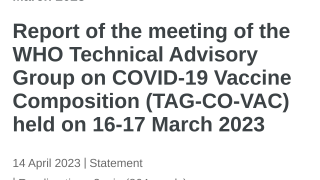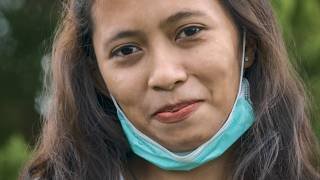WHO Needs COVID-19 Vaccination

The World Health Organization (WHO) Strategic Advisory Group of Experts on Immunization (SAGE) recently revised its roadmap for prioritizing the use of COVID-19 vaccines to reflect the impact of the SARS-CoV-2 Omicron variant.
And because of the high population-level immunity due to infection and previous COVID-19 vaccination.
Announced on March 28, 2023, the updated SAGE roadmap considers the cost-effectiveness of COVID-19 vaccination for those at lower risk, namely healthy children, compared to other interventions.
The roadmap also includes revised recommendations on additional booster doses and the spacing of boosters.
The current COVID-19 vaccines’ reduction of post-COVID conditions, such as Long-COVID, is also considered, but the evidence on the extent of their impact is inconsistent.
“Updated to reflect that much of the population is either vaccinated or previously infected with COVID-19, or both, the revised roadmap reemphasizes the importance of vaccinating those still at-risk of severe disease, mostly older adults and those with underlying conditions, including with additional boosters,” stated SAGE Chair Dr. Hanna Nohynek, in a press release.
“Countries should consider their specific context in deciding whether to continue vaccinating low-risk groups while not compromising routine vaccines (measles, polio, etc.) that are so crucial for the health and well-being of this age group.”
The revised roadmap outlines three priority-use groups for COVID-19 vaccination: high, medium, and low.
The high-priority group includes older adults; younger adults with significant comorbidities (e.g., diabetes and heart disease); people with immunocompromising conditions (e.g., people living with HIV and transplant recipients), including children aged six months and older; pregnant persons; and frontline health workers.
Children with immunocompromising conditions and comorbidities face a higher risk of severe COVID-19.
For the high-priority group, SAGE recommends an additional booster of either 6 or 12 months after the last dose, with the timeframe depending on factors such as age and immunocompromising conditions.
However, all COVID-19 vaccine recommendations are time-limited, only applying to the current epidemiological scenario. So the additional booster recommendations should not be considered for continued annual COVID-19 vaccine boosters. Instead, the aim is to serve countries planning for the near- to mid-term.
The medium priority group includes healthy adults – usually under 50-60 – without comorbidities and children and adolescents with comorbidities. SAGE recommends primary series and first booster doses for the medium priority group.
Although additional boosters are safe for this group, SAGE does not routinely recommend them, given the comparatively low public health returns.
The low-priority group includes healthy children and adolescents aged six months to 17 years. Primary and booster doses are safe and effective in children and adolescents.
However, considering the low burden of disease, SAGE urges countries considering vaccination of this age group to base their decisions on contextual factors, such as the disease burden, cost-effectiveness, and other health or programmatic priorities and opportunity costs.
As of March 30, 2023, the WHO reported a decrease in COVID-19 cases by 27% and related fatalities by 39% compared to the previous period.
Countries with a policy for additional boosters should assess the evolving need based on national disease burden, cost-effectiveness, and opportunity costs.
Separate from the SAGE roadmap, the WHO says countries can consider using BA.5 bivalent mRNA vaccine for the primary series.
For example, the European Medicines Agency human medicines committee announced on March 31, 2023; it recommended authorizing the COVID-19 vaccine Bimervax as a booster in people aged 16 years and older who have previously been vaccinated with an mRNA COVID-19 vaccine.










_0.jpg)

.jpg)


.jpg)






.jpg)